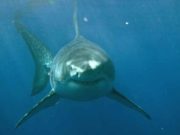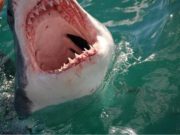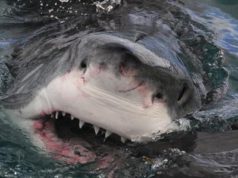 We’ve all seen movies of humpback whales playing in the sea. The most obvious feature is a nice symmetrical tail slapping the water as it dives. But we also see an awkward-looking flipper emerging as it breaches the water. That flipper fin has white lumps along its edge – lumps called tubercles. Still, it seems so crudely made. But it’s not what it seems. It’s actually a highly mobile wing that gives the whale fine control of its movement in water. Their underwater acrobatics are directly linked to those bumps.
We’ve all seen movies of humpback whales playing in the sea. The most obvious feature is a nice symmetrical tail slapping the water as it dives. But we also see an awkward-looking flipper emerging as it breaches the water. That flipper fin has white lumps along its edge – lumps called tubercles. Still, it seems so crudely made. But it’s not what it seems. It’s actually a highly mobile wing that gives the whale fine control of its movement in water. Their underwater acrobatics are directly linked to those bumps.
Humpback whales can grow up to 15 meters in length and weigh up to 30 tons. Over time, they have evolved to easily glide through water. Their enormous bodies are almost perfectly streamlined. But their pectoral fins – with their unusual array of bumps – seem out of place.
 Because of their bulky shape and size, they can’t use their bodies the way smaller swimmers such as dolphins do, but rely on their tails to push them through the water and their dorsal fins to help them make relatively sharp turns. Like helicopters, they risk stalling and sinking if they try to swim too fast or turn too quickly. As humpback whales grew larger over many thousands of years, bumps on the leading edge of their dorsal fins evolved to help provide the lift needed to maintain stability.
Because of their bulky shape and size, they can’t use their bodies the way smaller swimmers such as dolphins do, but rely on their tails to push them through the water and their dorsal fins to help them make relatively sharp turns. Like helicopters, they risk stalling and sinking if they try to swim too fast or turn too quickly. As humpback whales grew larger over many thousands of years, bumps on the leading edge of their dorsal fins evolved to help provide the lift needed to maintain stability.
And now, modern engineers have also found that the humpback whales might have the best gadget of them all. But it is quite a complex action. They have applied the same idea to the leading edges of helicopter rotors and have found that in doing so allows for greater stability and faster flight. The dorsal fin on a humpback whale is truly a powerful thing.

By copying nature’s design, aeronautical engineers can build increased stability into helicopters. The flow of air is similar to the flow of water. A whale moves in water much as an aeroplane moves in the air. Evenly spaced tubercles channel water (or air) back across the flipper (or wing) in vortices.

And either water or air clings longer to the fin (or to the wing) as the angle of attack increases.
Humpback whales might just have provided a solution to air flow disruption in helicopter rotor blades. It’s all in the fins.
Nature, it seems, just keeps giving.












